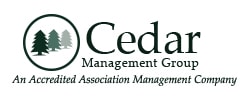The terminology surrounding the HOA governing documents can be confusing at times. If you have been a part of an HOA or even on the board, you may have heard the terms “governing documents”, “CC&Rs”, “articles of incorporation”, “bylaws”, and “rules and regulations” without really understanding the difference between them or what each individually means. In this article, we hope to clarify these terms and leave you with a broader knowledge of their use.
The HOA Governing Documents You Must Know About
“Governing documents” is a generalized term that is used to refer to all of the documents that are used to regulate, control, and organize each individual HOA. All of these HOA documents or condo documents are subject to local, state, and federal laws. They are the guidelines by which each community functions.
Homeowners who wish to review their association’s governing documents may do so without hassle. If you were not given copies when you first moved in (or if you lost them), most associations put up their HOA documents online. Another way on how to get HOA documents is to request copies either through your association or your county recorder’s office.
There are four types of HOA governing documents, which are outlined below according to the hierarchy of authority:
1. CC&Rs
 The CC&Rs (also known as the HOA Declaration of Covenants, Conditions, and Restrictions) is a document that is signed by each homeowner upon entering into a contract with an HOA.
The CC&Rs (also known as the HOA Declaration of Covenants, Conditions, and Restrictions) is a document that is signed by each homeowner upon entering into a contract with an HOA.
The document is legally binding and is filed with the state in which the home is purchased. In most cases, the CC&Rs is considered the primary document of homeowners associations.
Within the pages of this contract are listed many of the important items that are agreed upon by the community. This can include clarifications about maintenance responsibility, restrictions regarding property appearance and use, assessments and fees, and insurance requirements. These homeowner association documents also contain the guidelines for enforcement and resolution of conflict.
In short, the HOA CC&Rs define the rights of every resident, as well as the organization itself. Due to the very nature of these association documents, they are typically the most comprehensive. They are also widely regarded as the most crucial out of all the HOA governing documents. Not all CC&Rs are created equal, though, so the content may vary from association to association.
2. Articles of Incorporation
 You may be confused as to why a homeowners association would even need articles of incorporation.
You may be confused as to why a homeowners association would even need articles of incorporation.
An HOA is considered a nonprofit organization, therefore filing articles of incorporation is usually mandatory. It should be noted, though, that some states do allow the creation of unincorporated associations.
When a planned development or condominium is first established, a homeowner association (or condo association) is formed and articles of incorporation are filed with the secretary of state. Every new homeowner automatically joins the association, though they generally do not need to look through these articles.
The HOA articles of incorporation, while important, consist of only fundamental details. This includes the association’s name, location, and purpose. Because of this, these articles are usually short, though some associations choose to cover other subjects such as voting and amendments.
3. Bylaws

What are HOA bylaws? Simply put, bylaws are a semi-permanent set of guidelines that outline the processes of everyday governance and structure of the community.
Most of the homeowners association bylaws have to do with the board. They outline important items such as:
- Length of the term
- When board meetings should be held
- When the annual meeting should be conducted
- How many members must be on the board,
- Roles and responsibilities of board members
- How new members are elected
The homeowners association bylaws may also share a few traits with the CC&Rs in the sense that they can contain the rights and responsibilities of the HOA itself. Additionally, these homeowner association documents usually describe how the annual budget should be created and how assessments must be calculated.
In general, associations seek the help of a legal professional to draft HOA bylaws. These are then reviewed by the government. Because the association’s bylaws function internally, they are not filed with the government. As a result, the bylaws are typically easier to change compared to other HOA governing documents.
4. Rules and Regulations
 While the CC&Rs contain more general rules pertaining to the organization and its residents, homeowners associations still create a separate document called rules and regulations. These HOA rules and regulations are generally lengthier and more specific than the CC&Rs.
While the CC&Rs contain more general rules pertaining to the organization and its residents, homeowners associations still create a separate document called rules and regulations. These HOA rules and regulations are generally lengthier and more specific than the CC&Rs.
Furthermore, these documents are more flexible than the CC&Rs, given that the board has the ability to set a change in motion while only giving members of the community 30 days to review and express concerns at the change.
The HOA rules and regulations are set in place as a safety net to include anything that was missed or did not fit into categories in the CC&Rs and bylaws. They are usually smaller considerations regarding pool use, parking, pets, and general use of community amenities and common spaces. The rules and regulations help day by day interactions between homeowners, and their families, pets, and properties, in order to make everyone comfortable.
You must keep in mind, though, that the CC&Rs are higher on the hierarchy of authority than the rules and regulations. Should a rule come into conflict with a covenant, the CC&Rs will take precedence. When you make a new rule or decide to amend one, make sure it does not clash with your CC&Rs or state laws.
The Importance of HOA Governing Documents
All of the HOA governing documents are extremely important in making the community run smoothly. These documents should be referred to often in the case of disputes, violations, and enforcement. They are also crucial in some cases in determining who is responsible for maintenance and repairs. Thorough knowledge of your HOA governing documents is essential to understanding how your community works and how you can be an integral part of that community.
If you need further help in understanding your own HOA governing documents, it may be time to consult an HOA management company. Should that time come, do not hesitate to give us a call.
RELATED ARTICLES:
- What HOA Resolutions Should Your Board Have?
- HOA Terms: A Glossary Of Terminology And Definitions
- HOA Flag Rules: Can The HOA Restrict You From Raising A Flag?






